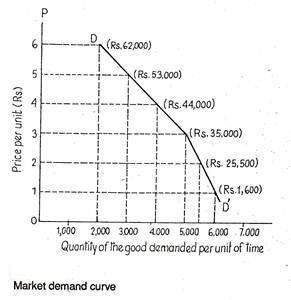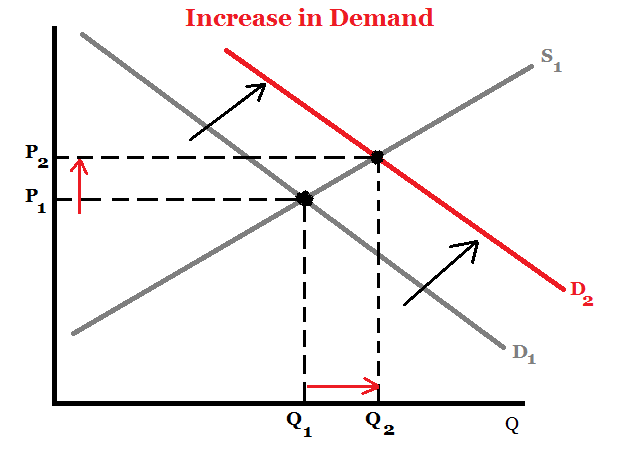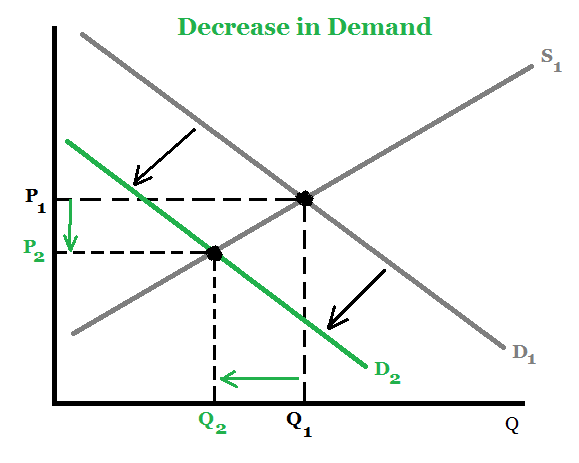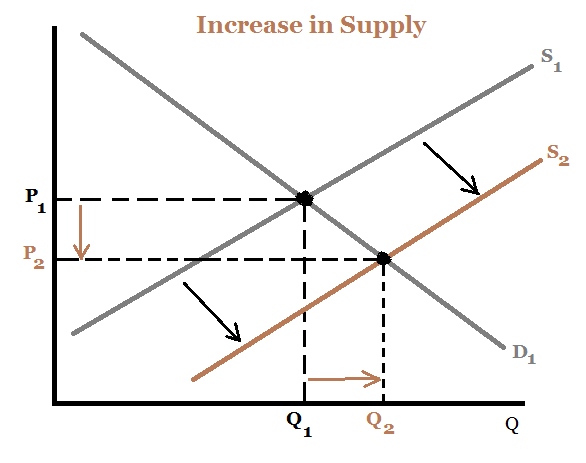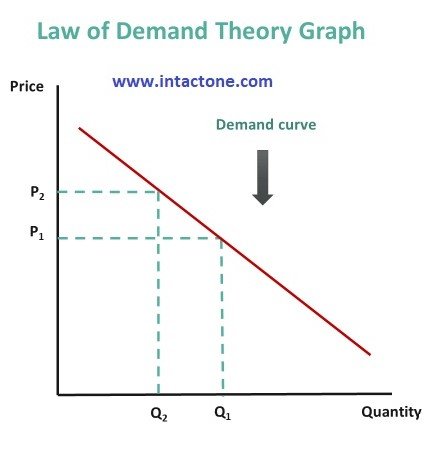Co-operative Organization is an association of persons, usually of limited means, who have voluntarily joined together to achieve a common economic end through the formation of a democratically controlled organization, making equitable distributions to the capital required, and accepting a fair share of risk and benefits of the undertaking.
The word ‘co-operation’ stands for the idea of living together and working together. Cooperation is a form of business organization the only system of voluntary organization suitable for poorer people. It is an organization wherein persons voluntarily associate together as human beings on a basis of equality, for the promotion of economic interests of themselves.
Characteristics/Features of Cooperative Organization:
-
Voluntary Association
A cooperative society is a voluntary association of persons and not of capital. Any person can join a cooperative society of his free will and can leave it at any time. When he leaves, he can withdraw his capital from the society. He cannot transfer his share to another person.
The voluntary character of the cooperative association has two implications:
(i) None will be denied the right to become a member and
(ii) The cooperative society will not compete anybody to become a member.
-
Spirit of Cooperation
The spirit of cooperation works under the motto, ‘each for all and all for each.’ This means that every member of a cooperative organization shall work in the general interest of the organization as a whole and not for his self-interest. Under cooperation, service is of supreme importance and self-interest is of secondary importance.
-
Democratic Management
An individual member is considered not as a capitalist but as a human being and under cooperation, economic equality is fully ensured by a general rule—one man one vote. Whether one contributes 50 rupees or 100 rupees as share capital, all enjoy equal rights and equal duties. A person having only one share can even become the president of cooperative society.
- Capital
Capital of a cooperative society is raised from members through share capital. Cooperatives are formed by relatively poorer sections of society; share capital is usually very limited. Since it is a part of govt. policy to encourage cooperatives, a cooperative society can increase its capital by taking loans from the State and Central Cooperative Banks.
-
Fixed Return on Capital
In a cooperative organization, we do not have the dividend hunting element. In a consumers’ cooperative store, return on capital is fixed and it is usually not more than 12 p.c. per annum. The surplus profits are distributed in the form of bonus but it is directly connected with the amount of purchases by the member in one year.
-
Cash Sale
In a cooperative organization “cash and carry system” is a universal feature. In the absence of adequate capital, grant of credit is not possible. Cash sales also avoided risk of loss due to bad debts and it could also encourage the habit of thrift among the members.
-
Moral Emphasis
A cooperative organization generally originates in the poorer section of population; hence more emphasis is laid on the development of moral character of the individual member. The absence of capital is compensated by honesty, integrity and loyalty. Under cooperation, honesty is regarded as the best security. Thus cooperation prepares a band of honest and selfless workers for the good of humanity.
-
Corporate Status
A cooperative association has to be registered under the separate legislation—Cooperative Societies Act. Every society must have at least 10 members. Registration is desirable. It gives a separate legal status to all cooperative organizations just like a company. It also gives exemptions and privileges under the Act.
Types of Cooperatives Company:
-
Cooperative Credit Societies
Cooperative Credit Societies are voluntary associations of people with moderate means formed with the object of extending short-term financial accommodation to them and developing the habit of thrift among them.
Germany is the birth place of credit cooperation. Credit cooperation was born in the middle of the 19th century. Rural credit cooperative societies were started in the villages to solve the problem of agricultural finance.
The village societies were federated into central cooperative banks and central cooperative banks federated into the apex of state cooperative banks. Thus rural cooperative finance has a federal structure like a pyramid. The primary society is the base. The central bank in the middle and the apex bank in the top of the structure. The members of the primary society are villagers.
In the similar manner urban cooperative credit societies were started in India. These urban cooperative banks look after the financial needs of artisans and labour population of the towns. These urban cooperative banks are based on limited liability while the village cooperative societies are based on unlimited liability.
National Bank for Agriculture and Rural Development (NABARD) has been established with an Authorised Capital of Rs. 500 crores. It will act as an Apex Agricultural Bank for disbursement of agricultural credit and for implementation of the programme of integrated rural development. It is jointly owned by the Central Govt. and the Reserve Bank of India.
-
Consumers’ Cooperative Societies
28 Rochedale Pioneers in Manchester in UK laid the foundation for the Consumers’ Cooperative Movement in 1844 and paved the way for a peaceful revolution. The Rochedale Pioneers who were mainly weavers, set an example by collective purchasing and distribution of consumer goods at bazar rates and for cash price and by declaration of bonus at the end of the year on the purchase made.
Their example has brought a revolution in the purchase and sale of consumer goods by eliminating profit motive and introducing in its place service motive. In India, consumers’ cooperatives have received impetus from the govt, attempts to check rise in prices of consumer goods.
-
Producers’ Cooperatives
It is said that the birth of Producers’ Cooperatives took place in France in the middle of 19th century. But it did not make satisfactory progress.
Producers’ Cooperatives, also known as industrial cooperatives, are voluntary associations of small producers formed with the object of eliminating the capitalist class from the system of industrial production. These societies produce goods for meeting the requirements of consumers. Sometimes their production may be sold to outsiders at a profit.
There are two types of producers’ cooperatives. In the first type, producer-members produce individually and not as employees of the society. The society supplies raw materials, chemicals, tools and equipment’s to the members. The members are supposed to sell their individual products to the society.
In the second type of such societies, the member-producers are treated as employees of the society and are paid wages for their work.
-
Housing Cooperatives
Housing cooperatives are formed by persons who are interested in making houses of their own. Such societies are formed mostly in urban areas. Through these societies persons who want to have their own houses secure financial assistance.
-
Cooperative Farming Societies
The cooperative farming societies are basically agricultural cooperatives formed for the purpose of achieving the benefits of large scale farming and maximizing agricultural output. Such societies are encouraged in India to overcome the difficulties of subdivision and fragmentation of holdings in the country.
Advantages of Cooperatives Company:
The operation of a cooperative society is quite economical due to elimination of middlemen and the voluntary services provided by its members.
Membership in a cooperative organisation is open to all people having a common interest. A person can become a member at any time he likes and can leave the society at any time by returning his shares, without affecting its continuity.
A cooperative society is a voluntary association and may be formed with a minimum of ten adult members. Its registration is very simple and can be done without much legal formalities.
A cooperative society is managed in a democratic manner. It is based on the principle of ‘one man one vote’. All members have equal rights and can have a voice in its management.
The liability of the members of a co-operative society is limited to the extent of capital contributed by them. They do not have to bear personal liability for the debts of the society.
Government gives all kinds of help to co-operatives, such as loans at lower rates of interest and relief in taxation.
Some of the expenses of the management are saved by the voluntary services rendered by the members. They take active interest in the working of the society. So, the society is not required to spend large amount on managerial personnel.
A co-operative society has a separate legal existence. It is not affected by the death, insolvency, lunacy or permanent incapacity of any of its members. It has a fairly stable life and continues to exist for a long period.
Cooperative societies promote the spirit of mutual understanding, self-help and self-government. They save weaker sections of the society from exploitation by the rich. The underlying principle of co-operation is “self-help through mutual help.”
Cooperative societies provide loans for productive purposes and financial assistance to farmers and other lower income earning people.
Cooperative societies are exempted from paying registration fees and stamp duties in some states. These societies have priority over other creditors in realising its dues from the debtors and their shares cannot be decreed for the realisation of debts.
The share is always open to new members. The shares of cooperative society are not sold at the rates higher than their par values. Hence, it is free from evils of speculation in share values.
Disadvantages of Cooperatives Company:
Co-operative societies are not able to raise their own resources. Their sources of financing are limited and they depend on government funds. The funding and the amount of funds that would be released by the government are uncertain. Therefore, co-operatives are not able to plan their activities in the right manner.
Co-operative societies have limited membership and are promoted by the weaker sections. The membership fees collected is low. Therefore, the funds available with the co-operatives are limited. The principle of one-man one-vote and limited dividends also reduce the enthusiasm of members. They cannot expand their activities beyond a particular level because of the limited financial resources.
Co-operatives have benefited the rural rich and not the rural poor. The rich people elect themselves to the managing committee and manage the affairs of the co-operatives for their own benefit.
The agricultural produce of the small farmers is just sufficient to fulfill the needs of their family. They do not have any surplus to market. The rich farmers with vast tracts of land, produce in surplus quantities and the services of co-operatives such as processing, grading, correct weighment and fair prices actually benefit them.
In the Western countries, co-operative societies were voluntarily started by the weaker sections. The objective is to improve their economic status and protect themselves from exploitation by businessmen. But in India, the co-operative movement was initiated and established by the government. Wide participation of people is lacking. Therefore, the benefit of the co-operatives has still not reached many poorer sections.
Co-operative societies are managed by the managing committee elected by its members. The members of the managing committee may not have the required qualification, skill or experience. Since it has limited financial resources, its ability to compensate its employees is also limited. Therefore, it cannot employ the best talent.
Co-operative societies give loans only for productive purposes and not for personal or family expenses. Therefore, the rural poor continue to depend on the money lenders for meeting expenses of marriage, medical care, social commitments etc. Co-operatives have not been successful in freeing the rural poor from the clutches of the money lenders.
Co-operative societies are subject to excessive government regulation which affects their autonomy and flexibility. Adhering to various regulations takes up much of the management’s time and effort.
If the members of the managing committee are corrupt, they can swindle the funds of the co-operative society. Many cooperative societies have faced financial troubles and closed down because of corruption and misuse of funds.
Co-operative societies operate with limited financial resources. Therefore, they cannot recruit the best talent, acquire latest technology or adopt modern management practices. They operate in the traditional mold which may not be suitable in the modern business environment and therefore suffer losses.
Maintenance of business secrets is the key for the competitiveness of any business organization. But business secrets cannot be maintained in cooperatives because all members are aware of the activities of the enterprise. Further, reports and accounts have to be submitted to the Registrar of Co-operative Societies. Therefore, information relating to activities, revenues, members etc becomes public knowledge.
Cooperative societies are based on the principles of co-operation and therefore harmony among members is important. But in practice, there might be internal politics, differences of opinions, quarrels etc. among members which may lead to disputes. Such disputes affect the functioning of the co-operative societies.
Co-operative societies cannot be introduced in all industries. Their scope is limited to only certain areas of enterprise. Since the funds available are limited they cannot undertake large scale operations and is not suitable in industries requiring large investments.
Since the management is taken care of by the managing committee, no individual can be made accountable for in efficient performance. There is a tendency to shift responsibility among the members of the managing committee.
Members lack motivation to put in their whole hearted efforts for the success of the enterprise. It is because there is very little link between effort and reward. Co-operative societies distribute their surplus equitably to all members and not based on the efforts of members. Further there are legal restrictions regarding dividend and bonus that can be distributed to members.
Public confidence in the co-operative societies is low. The reason is, in many of the co-operatives there is political interference and domination. The members of the ruling party dictate terms and therefore the purpose for which cooperatives are formed is lost.
Like this:
Like Loading...
